In Fall 2021 and Spring 2022, two undergraduate students helped me commission a longslit spectrograph on the 17-in telescope (PlaneWave CDK17) at the Van Allen Observatory (VAO). The LISA Spectrograph is made by Shelyak Instruments. The spectrograph bundle includes the spectrograph optics, a small CCD camera for target acquisition, a main CCD camera for recording spectra, and a calibration module of Argon and Tungsten lamps. It was purchased in 2021 with funding from a student technology fees proposal. The goal of the project is to enable UIowa undergraduate students to take moderate-resolution optical spectra from stars, nebulae, quasars, and galaxies in their introductory astronomy labs. This capability is new to the VAO. This page documents the development process.
Lab Testing
In Fall 2021, Wesley Steiner, a Physics sophomore, assembled the spectrograph with its cameras and its calibration unit, did the initial testing and tuning in the lab room, and mounted it on the 17in telescope of the VAO. When it was mounted on the telescope, the weather in Iowa City became too cold to open the dome. And because the VAO needs an imaging camera for teaching and public outreach, LISA had to be taken down and its first on-sky testing was delayed until April 2022.
The photo below illustrates the main components of the LISA
spectrograph:
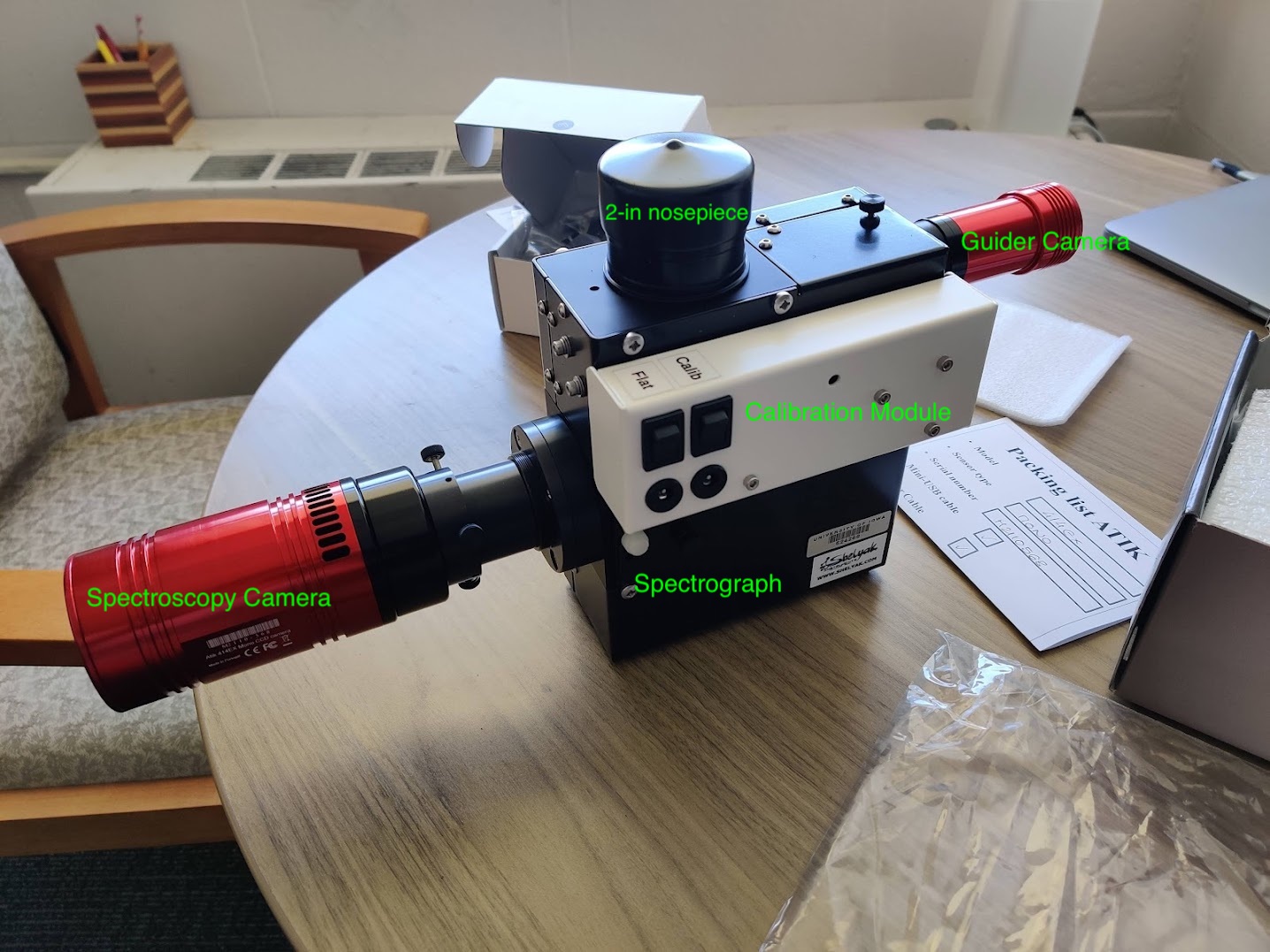
This is a photo of LISA mounted on the Cassegrain focus of the VAO 17-in
telescope:
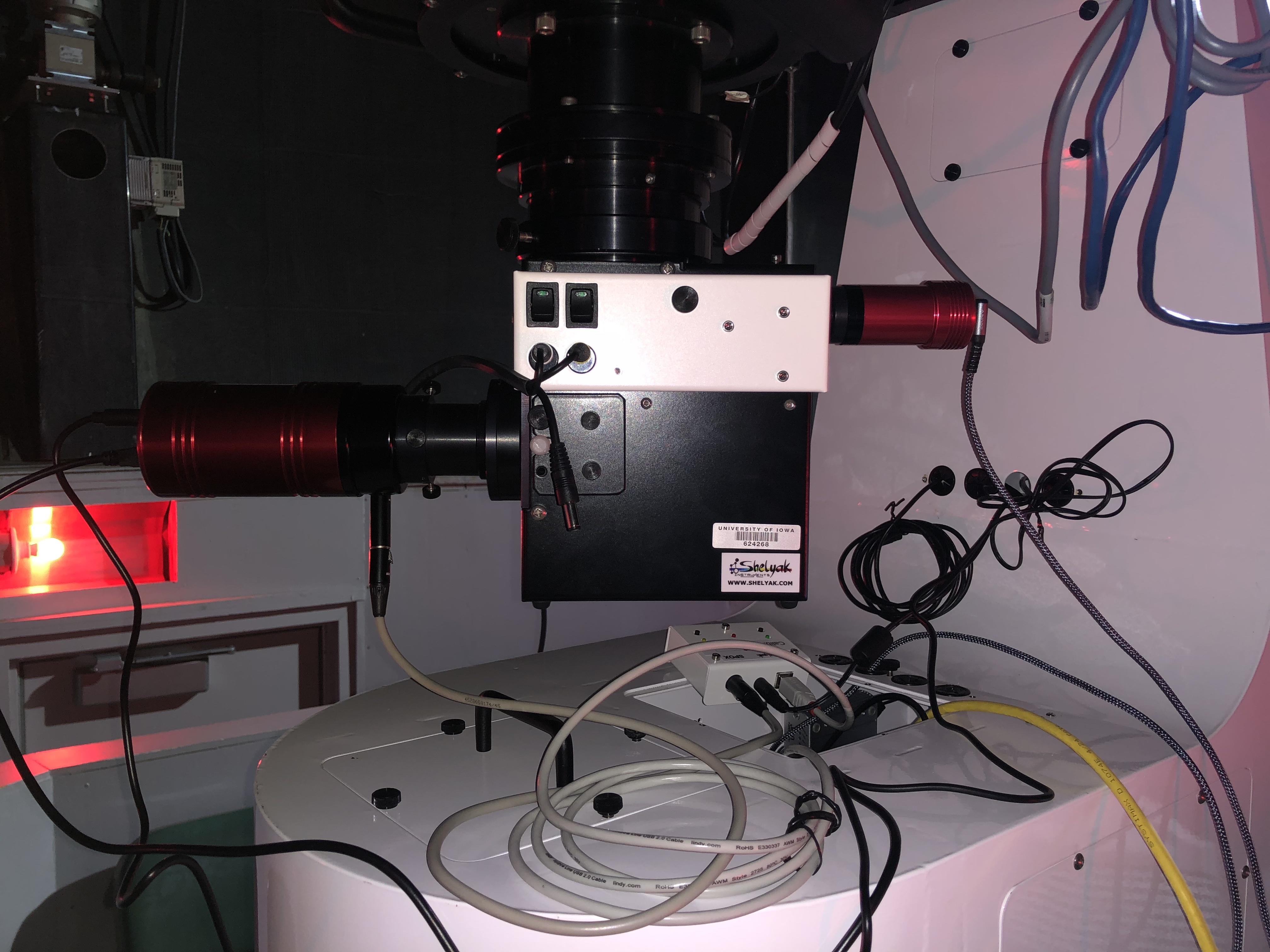
First Light
In April 2022, Will Goley, a Physcis junior, took the first on-sky data with LISA mounted on the 17-in telescope. We pointed at Polaris and took its spectrum.
In this guider camera image, you can see that Polaris is an apparent
triple star system, and the brightest star has been placed
on the narrow slit (the dark line across the image):
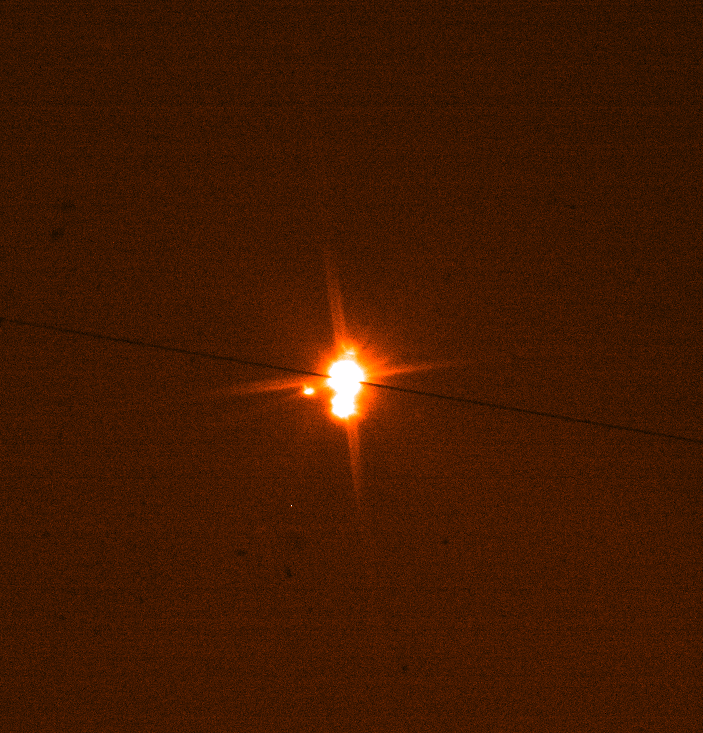
The images below show (1) the CCD image of the stellar spectrum and
(2) the extracted spectrum from the CCD image:

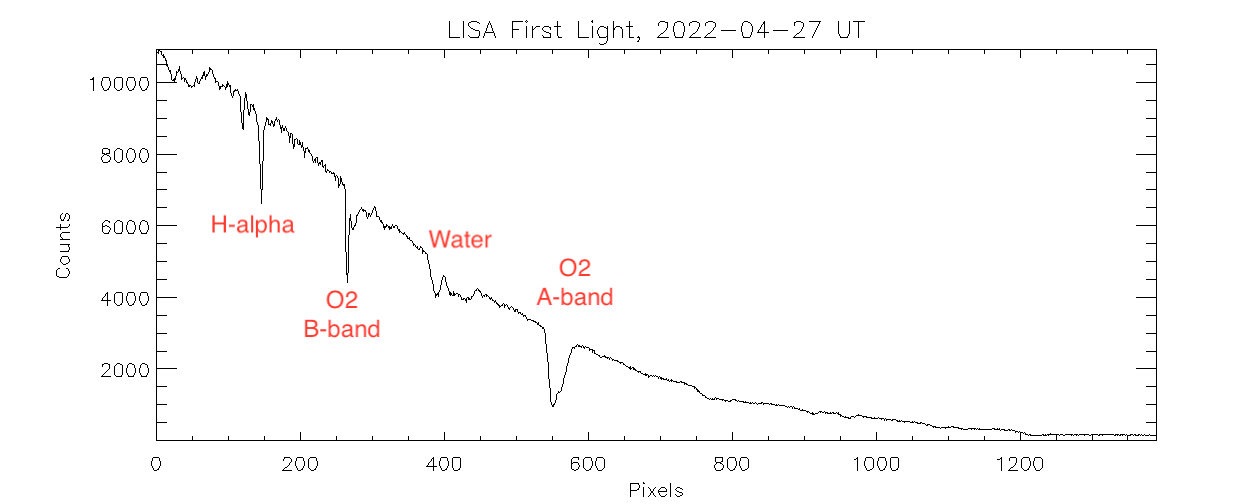
In the spectrum, you can clearly see the Hydrogen Balmer absorption line from the star, and the telluric absorption features from water and oxygen in the Earth’s atmosphere.
During this first on-sky test, we were able to:
- Control both the guider camera and the main camera simultaneously in MaxIm DL;
- Focus the slit mask using the guider camera and the autofocus sequence in PWI 3;
- Install the counterweight with rod made by the machine shop;
- Acquire target onto the slit by using Commands-Jog in PlaneWave Interface 4 and continuous exposing the guider camera;
- Take stellar spectra with the main camera;
- Take calibration lamp (arc and flat) spectra with the main camera and the calibration control unit.
The test also exposed several issues that were subsequently resolved in following week:
- tilt the grating angle to adjust the wavelength coverage from about 6000-9000 Angstrom to about 4000-7000 Angstrom.
- clean the slit mask (too much dust) and change to use the 15 micron slit. The slit mask has four slit widths: 15, 19, 23, 35 micron. The plate scale of the CDK-17 is 0.07 arcsec/micron, so these correspond to angular widths of 1.05, 1.33, 1.61, 2.45 arcsec.
- tune guiding camera focus and rotation angle.
- defocusing on both the blue and the red sides of the spectrum (notice the bifurcation of the spectral trace apparent in the 2D spectrum of Polaris above).
Observations of a Spectrophotometric Star
On May 12, 2022, Will observed the spectrophotometric star HR4554 (V=2.44, A0V type) using the 15 micron (1.05 arcsec) slit. The figures below show the spectrum from a single 0.25-sec exposure. As expected from an A-type star, the spectrum shows strong absorption lines from the Hydrogen Balmar series and a continuum peaking at blue wavelengths (indicating hot temperature).
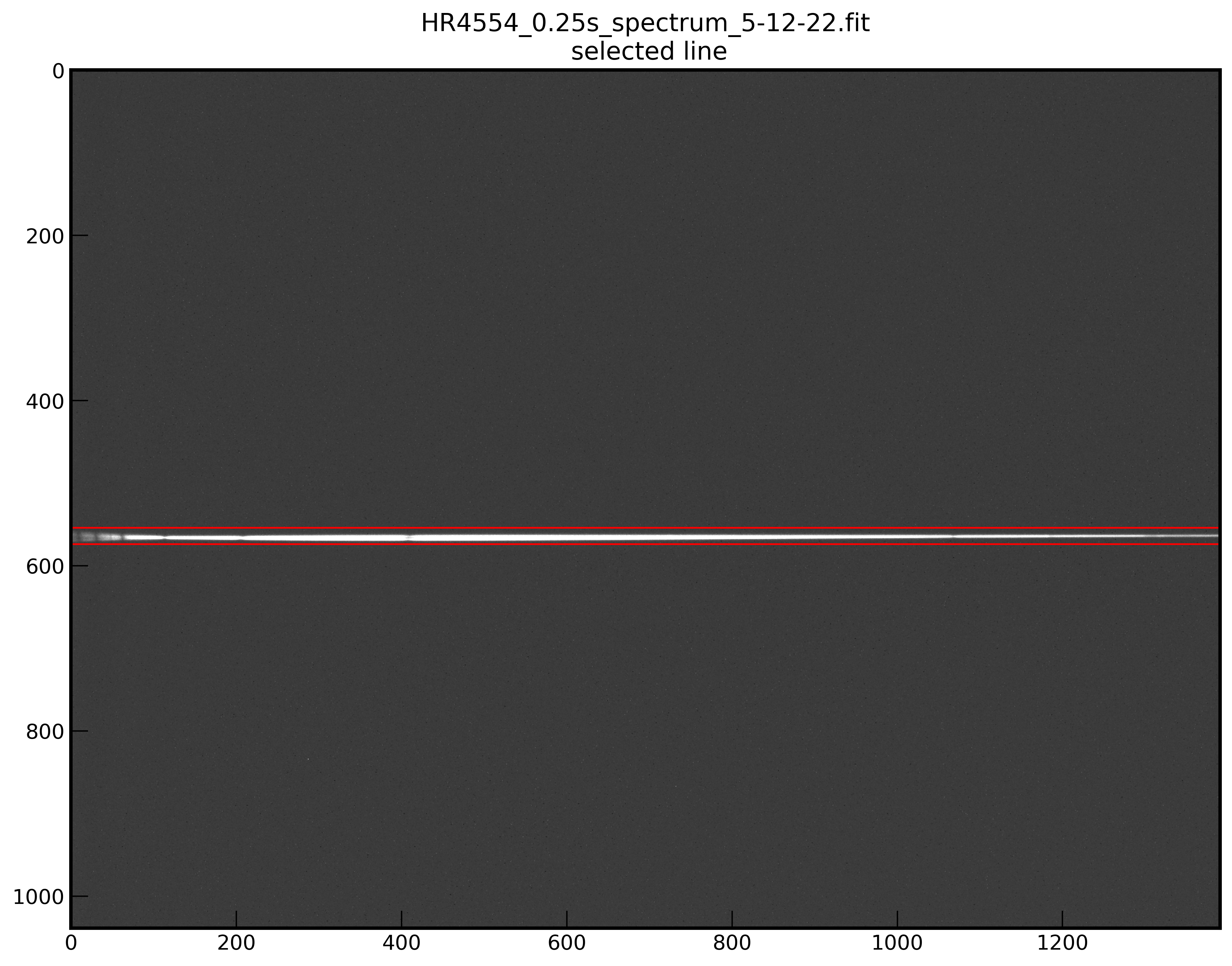
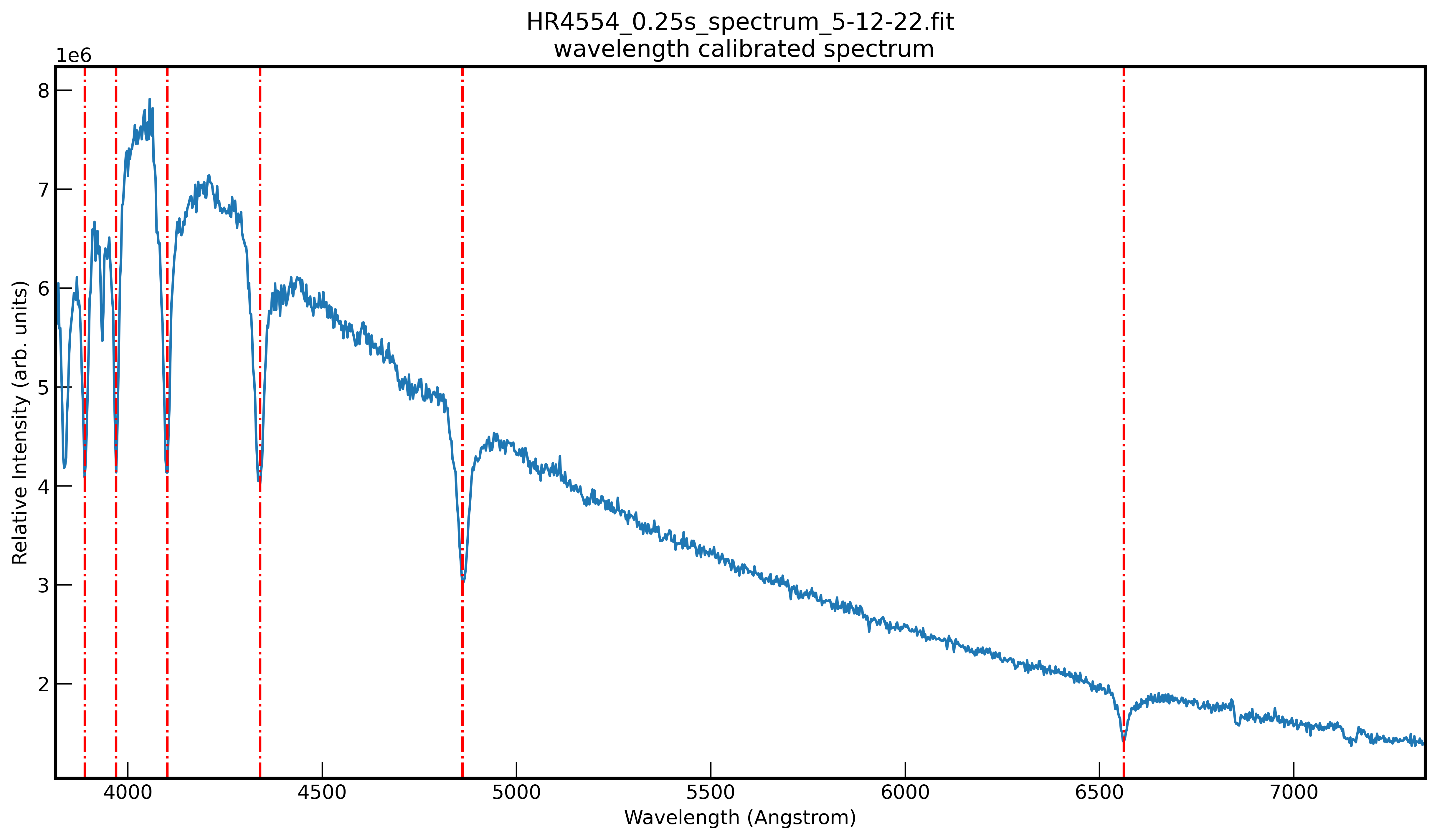
Based on this spectrum, we are able to calculate the total system throughput, which can then be used to estimate the required exposure time for future targets.
Acknowledgement
This work is partially supported by the Natinoal Science Foundation under grant AST-2103251.